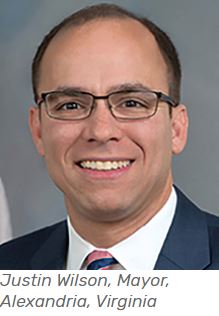
by Jonathan Sallet, Senior Fellow, Benton Institute for Broadband & Society
I was General Counsel of the Federal Communications Commission when it sought the preemption of state laws in Tennessee and North Carolina that limited the ability of municipalities to promote broadband. We failed in that effort, but the case laid out the key facts.
The FCC found that the provision of municipal broadband in Chattanooga, Tennessee, led to lower rates, increased investment, and improved service from an incumbent broadband provider.
Similarly, in Wilson, North Carolina, when faced with a municipal broadband entrant, an incumbent cable company held rates flat even as it raised rates in nearby geographic areas by up to 40 percent for comparable offerings. By the FCC’s calculation, new competition saved Wilson’s approximately 50,000 residents more than $1 million per year.
This is a familiar story, known to the members of CLIC but not given sufficient attention generally. The Benton Institute’s “Broadband for America’s Future: A Vision for the 2020s” calls for an ambitious goal. That every person in America have the ability to use High-Performance Broadband by the end of this decade. To achieve that goal requires success in each of four building blocks: more deployment, greater competition, emphasis on affordability and adoption, and empowerment of community institutions.
The competition story needs to be told: We can expect people with only one choice to pay monopoly prices, and people with only two choices to pay the higher prices typically charged by duopolies. People with three or more choices typically pay less. Clearly, people who can barely afford to pay a competitive price, say, low-income Americans, are particularly vulnerable to artificially high prices.
In fact, new FCC data (which we all know systematically overstates the presence of fixed broadband competition) shows that, at the typical speed of 100/10 Mbps, 80% of Americans have either no choices in broadband providers (monopoly) or only two choices (duopoly). That’s very little competition.
Local communities should have the freedom to help their people fully participate in a broadband world: learning, getting jobs, obtaining healthcare online. This is not to say that one-size fits all; there are many variations of public-private broadband partnerships. It is to say that empowering local leadership and action is imperative.

Here’s a recent example: Alexandria, Virginia, has only one high-speed, fixed-broadband provider. As Alexandria Mayor Justin Wilson explains, lack of competition leads, he believes, to an inferior product. Moreover, small-business owners say that lack of broadband competition limits investment and makes Alexandria a less attractive location for businesses. One small-business owner, whose business requires the transfer of large data files, told Mayor Wilson that he sends his employees who live in other places home to send and receive files where their broadband is better than it is at work.
After confirming that the local telecommunications company would not be expanding its fiber footprint, this past November, the City of Alexandria issued an invitation to bid for the construction of a municipal fiber network.
The idea is to build a fiber backbone that brings broadband to community anchor institutions – including public safety, schools, and libraries – but that will also lease capacity to private companies wanting to serve residential and small-business customers. That’s an important strategy because the network is, in effect, dual-use: providing immediate value for community institutions and longer-term possibilities for residential service.
As Mayor Wilson explains, just serving the government buildings with municipal fiber makes financial sense; the ability to serve residential and small-business customers is a bonus.
Academic research tells us that more broadband competition matters: pushing rivals to up their game, saving money for consumers, increasing the quality of service.
The actions of so many other CLIC members and communities gives voice to the need to promote competition.
We’ve learned a lot from talking with CLIC and local communities. But we’re eager to gain new insights and I would appreciate hearing from communities (you can reach us at broadband@benton.org) who have learned how to improve the broadband choices of their people. This is a story that must be told and it is rightly told emphatically by community leaders who understand their communities and the importance of broadband to their communities. And the Benton Institute will do our best to help tell that story as well.
This guest blog is co-published with the Benton Institute for Broadband and Society